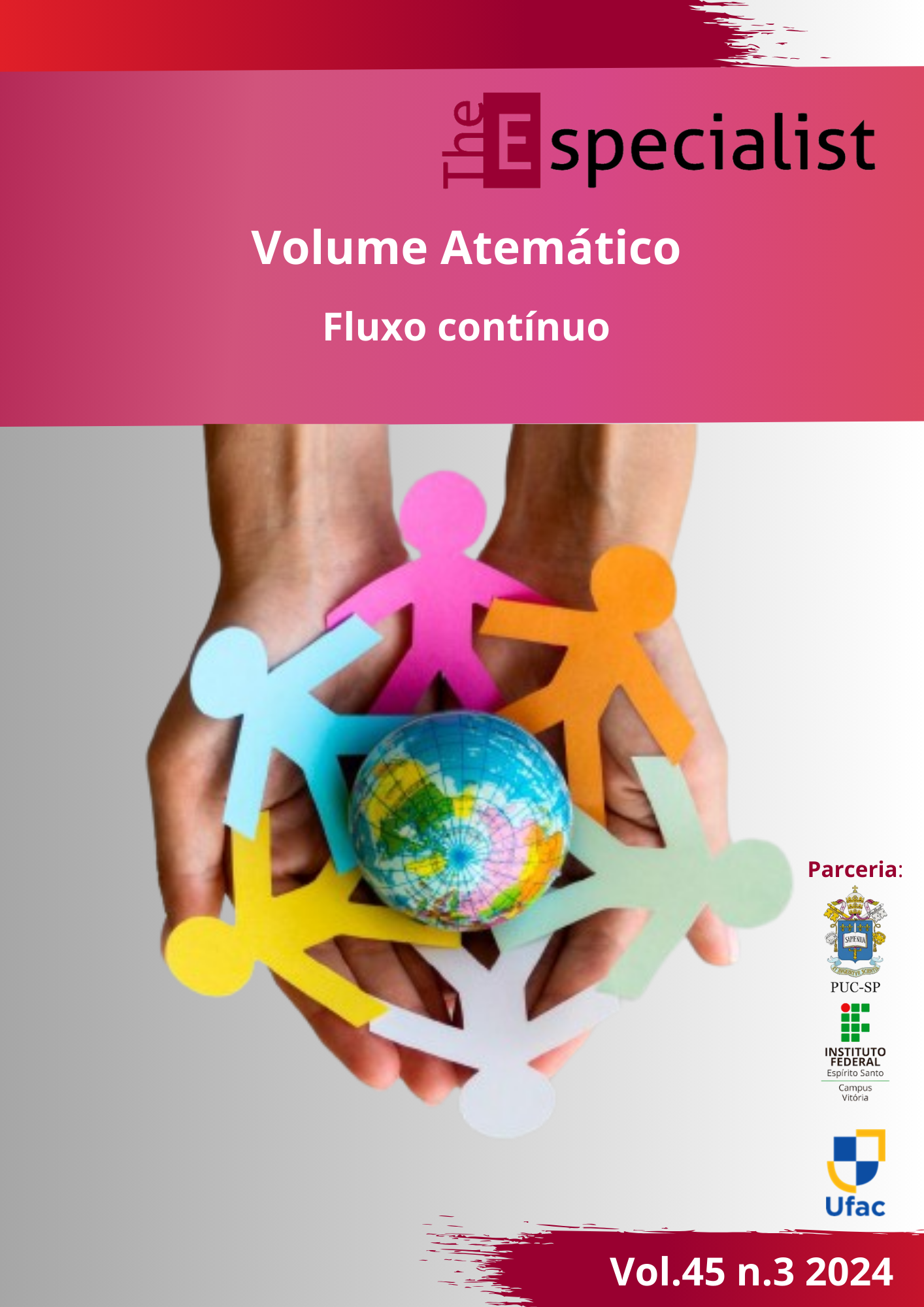Decoloniality and critical literacy in a unit of an English language teaching material
DOI:
https://doi.org/10.23925/2318-7115.2024v45i3e63083Keywords:
coursebook, decoloniality, critical literacy, multimodalityAbstract
This qualitative documental research aimed to analyze the sections Getting Started, Reading Comprehension, Language in Use, and English 4 Life, in unit 2 entitled “Is she Brazilian?”, from the book English Play 6 (FRANCO; TAVARES, 2019), for Brazilian students in the sixth year of elementary school. The theoretical background that supported this study included decoloniality (MCGREGOR, 2012; OLIVEIRA; CANDAU, 2010) and critical literacy (LUKE; DOOLEY, 2011; JANKS, 2016) in the composition of multimodal texts (SÁ; MELLO, 2018), focusing on the concepts of design and redesign (JANKS, 2013) in the exercises related to the analyzed unit. Data were examined in light of content analysis (BARDIN, 1977). The results showed that the sections present initiatives of decoloniality and sociocultural contextualization with the reality of Brazilian students in the sixth year of basic education; although some stereotyped notions and gaps remain regarding diversity, critical literacy and the chances of design and redesign in multimodal texts. Thus, this work contributes to studies on didactic materials used in English teaching in Brazil, considering the development of critical thinking and agency of basic education learners.
References
ANA, W. P. S.; LEMOS, G. C. Metodologia Científica: a pesquisa qualitativa nas visões de Lüdke e André. Revista Eletrônica Científica Ensino Interdisciplinar. Mossoró, v. 4, n. 12, p. 538-550, 2018.
BARDIN, L. Análise de Conteúdo. São Paulo: Edições 70, 1977.
BOCHE, B. Multiliteracies in the Classroom: Emerging Conceptions of First-Year Teachers. Journal of Language and Literacy Education, Vol. 10, Nº 1, 2014.
BRASIL. Ministério da Educação. Base Nacional Comum Curricular. Brasília, 2018.
COPE, B.; KALANTZIS, M. ‘Multiliteracies’: New Literacies, New Learning. University of Illinois: Urbana-Champaign, 2009.
DENZIN, N. K.; LINCOLN, Y. S. (Orgs). O planejamento da pesquisa qualitativa: teorias e abordagens. 2. ed. Porto Alegre: Artmed, 2006.
FLEURI, R. M. Desafios à educação intercultural no Brasil. PerCursos, Florianópolis, Vol. 2, Nº 0, 2001.
FRANCO, C. P.; TAVARES, K. C. English Play 6. 1. ed, São Paulo: FTD, 2019.
HELLER, Eva. A psicologia das cores: Como as cores afetam a emoção e a razão. Tradução: Maria Lúcia Lopes da Silva. 1 ed. São Paulo: Gustavo Gili, 2013.
JANKS, H. Critical literacy in teaching and research. Education Inquiry, Vol. 4, No. 2, Jun. 2013.
JANKS, H. Panorama sobre letramento crítico. In: JESUS, Dánie Marcelo de; CARBONIERI, Divanize (Org.). Práticas de multiletramentos e letramento crítico: outros sentidos para a sala de aula de línguas. Coleção: Novas Perspectivas em Linguística Aplicada Vol. 47. Campinas, SP: Pontes Editores, 2016, p. 22-36.
LADSON-BILLINGS, G. Through a glass darkly: The persistence of race in education research and scholarship. Educational Researcher, vol. 41, n.4, p.115–120, 2012.
LUKE, A.; DOOLEY, K. Critical literacy and second language learning. In: Hinkel, E. (Ed.). Handbook of Research in Second Language Teaching and Learning (Vol II). Routledge, United States, 2011.
MCGREGOR, H. E. Decolonizing Pedagogies Teacher Reference Booklet. Service Project for: Aboriginal Focus School, Vancouver School Board. Mar. 2012.
MORA, R.A. Criticality and English Language Education: An Autoethnographic Journey. HOW, vol 28, n. 3,Bogotá, Colombia, p. 62-77, 2021.
NIETO, C.H.G; JORDÃO, C.M; VERONELLI, G. Decoloniality in ELT: a political project. Ikala: Ç.Revista de Lenguage y Cultura, vol. 27, n.3, p. 586-594, 2022.
OLIVEIRA, L. F.; CANDAU, V. M. F. Pedagogia decolonial e educação antirracista e intercultural no Brasil. Educação em Revista, Belo Horizonte, v. 26, n. 01, p. 18-28, 2010.
RAUTINS, C.; IBRAHIM, A. Wide-Awakeness: toward a critical pedagogy of imagination, humanism, agency, and becoming. The International Journal of Critical Pedagogy, Vol. 3, n.3, p. 24-36, 2011.
ROSA, J.; FLORES, N. Decolonization, language and race in Applied Linguistics and social justice. Applied Linguistics, vol. 42, n. 6, p. 1162-1167, 2021.
SÁ, R. L.; MELLO, P. C. Multimodalidade: das origens ao ensino de línguas na contemporaneidade. PUC-Rio Coleção Digital, 2018, n.p. Disponível em: <https://www.maxwell.vrac.puc-rio.br/34129/34129.PDF>. Acesso em 03 ago. 2022.
SILVA, F. M. Letramento crítico e o ensino de língua inglesa: fomentando o senso crítico e a cidadania nas aulas de leitura. Letras & Letras. Uberlândia, vol 34, n.1, p. 18- 28, 2018. Disponível em: <https://seer.ufu.br/index.php/letraseletras/article/view/37807/22430>. Acesso em 27 fev. 2022.
STREET, B. V. Letramentos sociais: abordagens críticas do letramento no desenvolvimento, na etnografia e na educação. Trad. Marcos Bagno. São Paulo: Parábola, 2014.
Downloads
Published
How to Cite
Issue
Section
License
Copyright (c) 2024 The ESPecialist

This work is licensed under a Creative Commons Attribution 4.0 International License.
The authors grant the journal all copyrights relating to the published works. The concepts issued in signed articles are the absolute and exclusive responsibility of their authors.


 Esta obra está licenciada com uma Licença
Esta obra está licenciada com uma Licença 